Still struggling with formulating a questions and narrowing my subject for my research report, I found a book that really interested me titled "Better Game Characters by Design: A Psychological Approach" by Katherine Isbister. The book focus' on what makes a good game character with a psychological approach to how the player perceives game characters and how they react to them.
At this point I am thinking of using this book to find out what makes a good game character, and them compare to popular video game characters and whether they fit in with what the author says. I will also compare to "bad" or unpopular characters and discuss what aspects needed to change to make them popular. So at this point I have a working title of:
What makes a good Video Game character design?
The first chapter discusses the physical appearance of a character, how we as humans perceive attractiveness, and how this can be applied to characters.
Studies have shown that many qualities are attributed to
people with attractive features—sometimes referred to as the halo effect. These
qualities include being seen as warmer, kinder, stronger, more sensitive, more
outgoing, more socially persuasive and dominant, and even smarter than others.
It’s even the case that attractive people get more lenient sentences in court, and
they may get preference in hiring decisions.
Isbister states that a healthy,
symmetrical face and body and straight profile are features that have been
shown to produce higher attractiveness ratings and a strong
chin is a mature facial feature often associated with attractiveness in men.
These are attributes that can be given to the popular video game character, Nathan Drake from the Uncharted series.
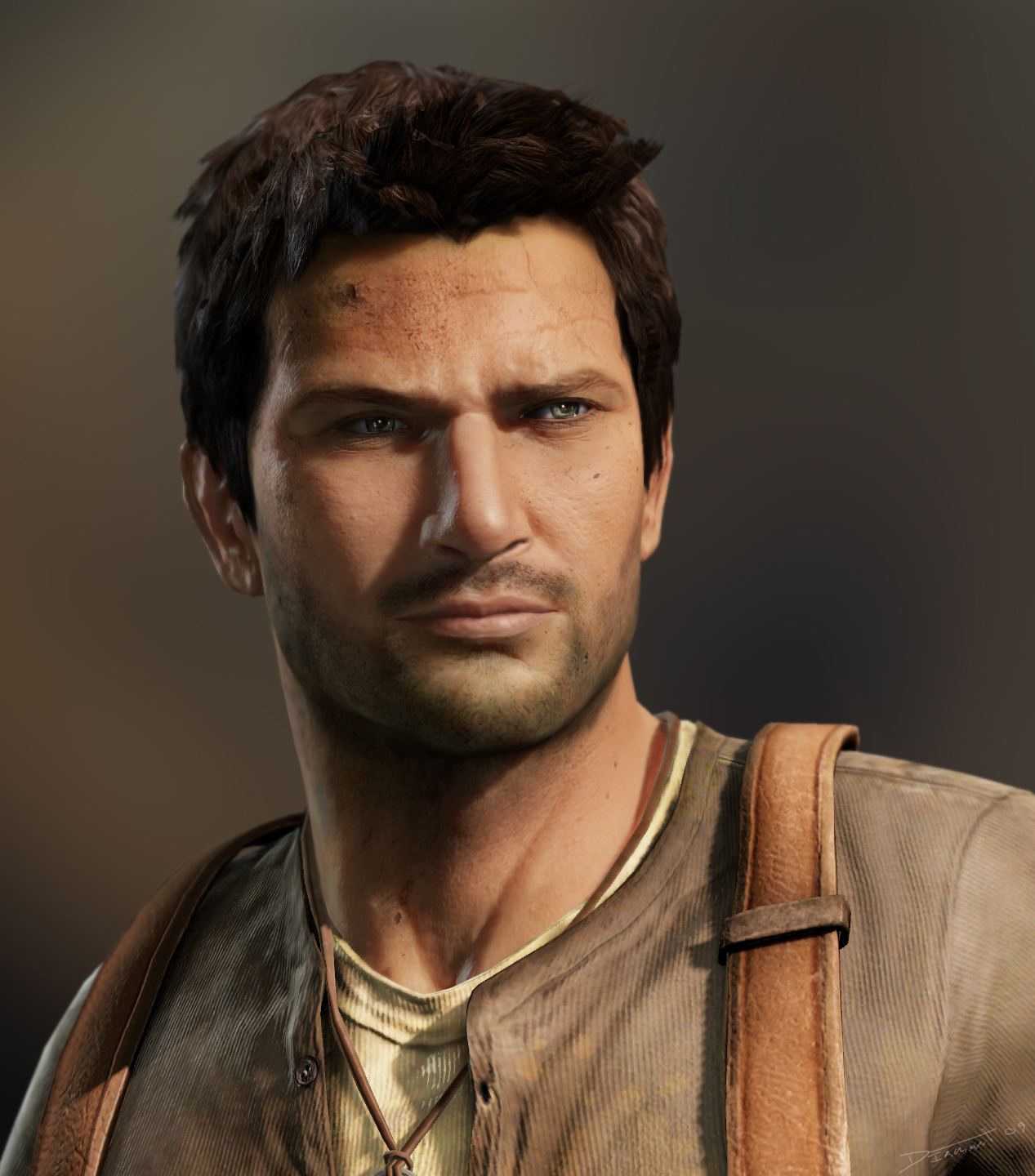
Whereas, a characters with asymmetry in body and features, a snaggle-toothed
smile, unhealthy skin, weak chin, and convex profile is loaded with cues that
have led to lower ratings of attractiveness.
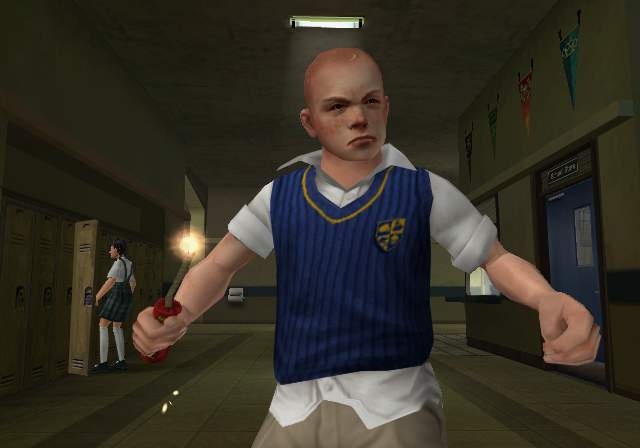
Jimmy from the game Bully could be argued as having these less attractive features
However, different cultures have different views on what being attractive is. For example, a lot of eastern games, particularly attractive Japanese characters, resemble a more feminine look, opting for a more heart shaped face, larger eyes and overall younger look, but still adopt the symmetrical face and body.
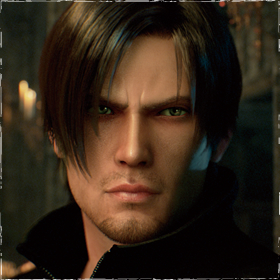

Two examples are Leon Kennedy from Resident Evil (although he has had a "manly-stubble upgrade" for resident evil 6) and many of the many main characters in the Final Fantasy series such as Tidus from Final Fantasy 10.
Not only is it important for the playable character to be attractive, but the look of other characters the player interacts with must be carefully designed too. If the main character has a love interest, it is important for this character to be attractive to the player as well, in order to feel fully immersed into the main characters world.
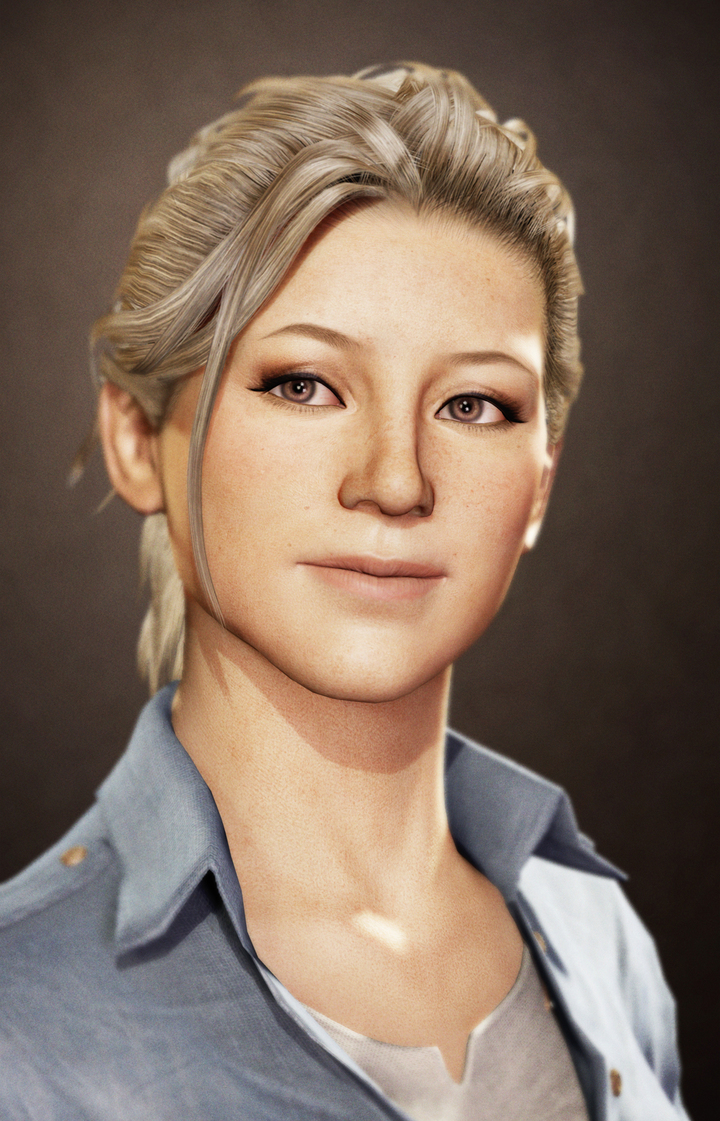

These are two of Nathan Drakes love interests in the Uncharted Series. Their characters are both very different, Elena (left) representing the more kind-hearted, good girl that any guy would gladly take home to meet the parents, and Chloe (Right) the sexy, bad girl that no mother would approve of. Despite their differences, they are both still attractive to both the player and Nathan Drake, and both reflect different aspects of his personality making his relationship with each believable.
Baby faces.
The next section goes on to talk about Baby faces:
The next section goes on to talk about Baby faces:
The human bias is to assume that those who have babyfaces will be warmer and
more trustworthy but also may be more dependent, less responsible, and more
submissive and manipulable. Psychologists call this an overgeneralization: attributing
traits of a child to adults with childlike features. The babyface bias has been
shown to affect judgments of people from infancy to old age. The babyface effect
transcends cultural and even species lines—people find baby animals just as cute
and nurturable as baby humans.
This baby face effect, has been used across many cultures in the entertainment media, the one that first springs to mind for me are Chibis, popular in Japanese manga.
Chibi (ちび or チビ) is a Japanese slang word meaning "short person" or "small child". The word has gained currency amongst fans of manga and anime.
Taken from Wikipedia http://en.wikipedia.org/wiki/Chibi_(term)
A Japanese word that is often used as a put-down in its original context, being roughly equivalent in meaning to "shrimp," "runt," "squirt," "dwarf," "midget," or "small-fry."
In slang, however, it occasionally takes on aspects of cuteness, particularly when the individual in question is young, female, and already considered "cute" by the speaker. It can also be used as shorthand for a drawing style of Japanese origin more properly known as super deformed (SD). Its usage in English (or rather, Japanglish) ignores the word's derogatory context, and focuses on the "cute" meaning as it often appears in anime and manga, and its exclusive usage in this context is a good sign that the speaker does not, in fact, know how to speak Japanese. |
Taken from the Urban Dictionary : http://www.urbandictionary.com/define.php?term=chibi

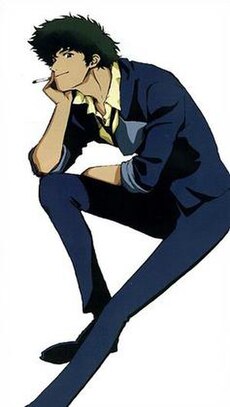
The image on the left is a piece of Fan Art (by Kittyshinigami on Deviant art: http://kittyshinigami.deviantart.com/art/Bebop-chibi-Spike-146382563) that shows Spike from the anime Cowboy Bebop in a "Chibi" form. His large eyes and baby face makes him look cuter yet weaker and a need to be cared for. Whereas, anyone who knows the original Spike, (image on the right) would know that he is fully capable of looking after himself.
At this point I am wondering whether to compare western and eastern cultures in game character design:
What is the difference between good Eastern and Western character Design?
Stereotypes
The way we judge people is based on Stereotypes:
"schemas or prototypes in your memory that associate a
pattern of cues with a typical set of qualities in a person. These cues can include
dress, build, posture, grooming, age, gender, race, style of speaking and moving, as
well as the company in which a person is seen." Isbister 2006
"height is something associated (for males) with responsibility and social
dominance"

Nathan Drake is portrayed as an "average joe" but he isn't so average, in my opinion he is portrayed as being tall, (even thought the uncharted wikipedia states him being an average 5ft 10) as well as good looking, which portrays his responsibility, as a player we have a trust in him that he can handle most tasks, and social dominance, which he is seen to have over most characters.
Although stereotypes can be bad, they can also be useful in game character design, for example, if a creature attacks a player, the player will assume the knowledge that all creatures resembling that initial creature will be an enemy, thus creating an in-game stereotype.

Goombas from the Super Mario universe have developed a stereotype, everyone knows these things will hurt you if walking into them, and so avoid them like the plague. But who knows, maybe that strange mushroom headed creature just wanted a hug, but you opted to jump on the poor little guys head instead, due to stereotyping.
These are two characters that also have wearying stereotypes. Big Daddies and Little Sisters from the Bioshock series.

During the game, when you first meet a little sister, you immediately judge her to be a poor abandoned child and you, the player, are the only one to protect her. (it is in our human nature to feel a need to protect the young). However, you soon get that feeling of greatness shoot out of you when the big guy comes a long and you realise that this little girl isn't quite as helpless as you first thought, all while trying to fight off this mechanical, armoured beast. This then creates a stereotype with these girls, and whenever you see one throughout the rest of the game, you have a stereotype that a fight will come shortly after any encounter.
Good designers also build memorable characters by taking well-worn stereotypes
and crafting characters that have a few traits that go against type.
The Art of Game Design: A book of lenses
The Nature of Game Characters
If we are to create games that have great stories in them, these stories must contain memorable characters. It is an important question to ask: How are characters in games different than characters in other media? If we examine fictional characters in various media side by side, some differences become apparent. Here are some samples I chose from lists of the best novels, films and videogames of the twentieth century.
Within this chapter (AUTHOR) discuses the differences between characters in novels,films and games. The main differences stated are:
The Mental and Physical Struggles: Characters in novels are mostly tumoiled with mental struggles, which makes sense considering when we read novels, we are hearing the main characters inner thoughts. Film characters tend to struggle with both mental and physical worries, which makes sense as the nature of the media is to watch, see the physical, and hear, the characters mental struggles through speech. Game characters struggles are mainly physical, again, the nature of the media suits this problem better because the player is taking on the role of another character, and therefore every players mental struggle would be different
The Reality or Fantasy of the world: Novels tend to be set in reality, films tend to be set in a realistic world that pushes the boundaries of fantasy whereas nearly all games are set in a completely fantasy world with characters built from that fantasy world.
The complexity of the plot: The plot of most popular novels tend to be rather complex and deep, and the complexity of plot tends to diminish from film to game. In my opinion, this is probably due to the intention of each media, games are intended to be fun to play and engage with, whereas novels only have words as form of entertainment, therefore, the story has to be wholly engaging.
Schell goes on the say that this might conclude that video games are doomed to have simple fantasy characters engaging in mostly physical actions. However, some games to employ deeper characters to a basic game-play in order to create a complex or deep storyline and experience (for example, Final Fantasy VII). Schell believes players are crying out for games with richer more meaningful characters and story-lines.
What is the difference between good Eastern and Western character Design?
Stereotypes
The way we judge people is based on Stereotypes:
"schemas or prototypes in your memory that associate a
pattern of cues with a typical set of qualities in a person. These cues can include
dress, build, posture, grooming, age, gender, race, style of speaking and moving, as
well as the company in which a person is seen." Isbister 2006
"height is something associated (for males) with responsibility and social
dominance"

Nathan Drake is portrayed as an "average joe" but he isn't so average, in my opinion he is portrayed as being tall, (even thought the uncharted wikipedia states him being an average 5ft 10) as well as good looking, which portrays his responsibility, as a player we have a trust in him that he can handle most tasks, and social dominance, which he is seen to have over most characters.
Although stereotypes can be bad, they can also be useful in game character design, for example, if a creature attacks a player, the player will assume the knowledge that all creatures resembling that initial creature will be an enemy, thus creating an in-game stereotype.

Goombas from the Super Mario universe have developed a stereotype, everyone knows these things will hurt you if walking into them, and so avoid them like the plague. But who knows, maybe that strange mushroom headed creature just wanted a hug, but you opted to jump on the poor little guys head instead, due to stereotyping.
These are two characters that also have wearying stereotypes. Big Daddies and Little Sisters from the Bioshock series.

During the game, when you first meet a little sister, you immediately judge her to be a poor abandoned child and you, the player, are the only one to protect her. (it is in our human nature to feel a need to protect the young). However, you soon get that feeling of greatness shoot out of you when the big guy comes a long and you realise that this little girl isn't quite as helpless as you first thought, all while trying to fight off this mechanical, armoured beast. This then creates a stereotype with these girls, and whenever you see one throughout the rest of the game, you have a stereotype that a fight will come shortly after any encounter.
Good designers also build memorable characters by taking well-worn stereotypes
and crafting characters that have a few traits that go against type.
The Art of Game Design: A book of lenses
The Nature of Game Characters
If we are to create games that have great stories in them, these stories must contain memorable characters. It is an important question to ask: How are characters in games different than characters in other media? If we examine fictional characters in various media side by side, some differences become apparent. Here are some samples I chose from lists of the best novels, films and videogames of the twentieth century.
Within this chapter (AUTHOR) discuses the differences between characters in novels,films and games. The main differences stated are:
The Mental and Physical Struggles: Characters in novels are mostly tumoiled with mental struggles, which makes sense considering when we read novels, we are hearing the main characters inner thoughts. Film characters tend to struggle with both mental and physical worries, which makes sense as the nature of the media is to watch, see the physical, and hear, the characters mental struggles through speech. Game characters struggles are mainly physical, again, the nature of the media suits this problem better because the player is taking on the role of another character, and therefore every players mental struggle would be different
The Reality or Fantasy of the world: Novels tend to be set in reality, films tend to be set in a realistic world that pushes the boundaries of fantasy whereas nearly all games are set in a completely fantasy world with characters built from that fantasy world.
The complexity of the plot: The plot of most popular novels tend to be rather complex and deep, and the complexity of plot tends to diminish from film to game. In my opinion, this is probably due to the intention of each media, games are intended to be fun to play and engage with, whereas novels only have words as form of entertainment, therefore, the story has to be wholly engaging.
Schell goes on the say that this might conclude that video games are doomed to have simple fantasy characters engaging in mostly physical actions. However, some games to employ deeper characters to a basic game-play in order to create a complex or deep storyline and experience (for example, Final Fantasy VII). Schell believes players are crying out for games with richer more meaningful characters and story-lines.
No comments:
Post a Comment